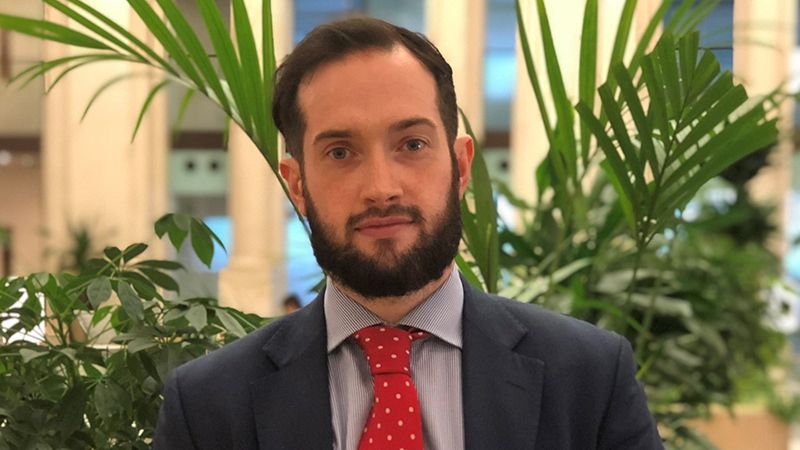The transition to net zero should, in theory, be a triumph of logic. Less carbon, fewer disasters, cleaner air – who wouldn’t want that? But, to quote Yogi Berra, a legendary baseball player and manager, in theory, there is no difference between theory and practice. In practice, there is.
Putting to one side the obvious elephant in the room – the recent Trump tariff-driven volatility – these are the three major challenges facing investors targeting climate change and it is about much more than who might be in charge of the White House.
Elephant one: Net zero itself
We are not suggesting the world shouldn’t try to keep warming to 1.5 degrees above pre-industrial temperatures. That was a level scientists suggest represents a better outcome for humanity and it’s right that every degree counts. But investors are less influential actors than politicians and we are currently living in an era where governments are not only thinking about climate change – they are also trying to balance considerations around geopolitical threats, AI and the cost of living.
Investing in the future means analysing where portfolios should be positioned for probable outcomes. Climate Action suggests the world is on course for around 2.7 degrees in terms of policy, and the Copernicus Climate Change Service suggests the world breached 1.5 degrees last year.
This is the bit no one really wants to admit: we’re not on track for net zero. In fact, we’ve already blown past it. Global emissions are still rising, and even if we magically stopped tomorrow, we are already locked into a hotter world. For investors, this means a brutal but necessary mindset shift. It’s not just about stopping climate change anymore – it’s about adapting to it.
Also read: Challenging the trade-off misconception between adaptation and mitigation
Infrastructure, agriculture, water security and insurance markets are all going to be radically reshaped by a world where 1.5 degree warming is a misnomer, and more than two degrees is the reality. This isn’t a doomsday scenario – it is now an investment imperative.
The smart money will not be in green or brown energy – it will be in climate adaptation. The cities, businesses and technologies that can withstand heatwaves, floods and supply chain chaos will be the real winners. Investors need to ask not just “How do we prevent climate change?” but “How can we thrive in the world we’ve already created?”
Elephant two: Energy transition as a concept
One of the biggest misconceptions about energy transition is that it involves replacing old technologies with new ones. As economist Steve Keen and energy historian Vaclav Smil point out, this simply isn’t how energy shifts have historically worked. We didn’t stop burning wood when we started using coal. We didn’t stop using coal when we moved to oil. And we certainly haven’t stopped using oil, even as renewables have expanded.
The global energy mix today looks shockingly similar to what it was 30 years ago – just with more of everything. This is the inconvenient truth about net zero: clean energy is often an addition rather than a substitution.
Wind and solar are growing, but so is coal in many parts of the world. Fossil fuel consumption isn’t dropping fast enough because energy demand keeps rising – not surprising given the world’s population was 5.87 billion in 1995 and is 8.2 billion in 2025. And instead of replacing old systems, we’re just layering new technologies on top.
The real challenge isn’t just scaling renewables – it’s actually displacing entrenched fossil fuel industries, something we’ve historically failed to do at any meaningful speed.
Elephant three: Investor commitment fatigue
Investors loved net zero – until they realised it required doing things rather than just saying them. As soon as fiduciary duty and financial returns started pulling in the opposite direction from climate goals, we saw the ‘great green retreat’.
Major financial institutions are quietly backing away from net-zero alliances because, inconveniently, real-world markets are not structured to reward long-term planetary survival over short-term portfolio performance.
One of the lessons here is that a ‘one size fits all’ position does not work for every investor in every geography. The US is energy independent and a heavy focus on renewables makes less sense for investors there than it does in places that import most of their energy like Europe and China.
Investors also differ in their time horizons. While it’s very credible for a pension fund with a long investment horizon to be focused on the financial impacts of climate on their obligations to deliver pension payments to beneficiaries, this is less true for a portfolio with a much shorter-term goal. The lesson here is the moment ‘doing good’ starts conflicting with making money, reality kicks in. The fix? Stop trying to make investors moral – level with them around trade-offs and time horizons.
A lot of investors think they’re helping the planet by ‘decarbonising’ their portfolios – essentially, selling off high-emission assets so they look good on paper. It’s the financial equivalent of a juice cleanse: it might make you feel virtuous, but it doesn’t actually fix anything. The carbon-intensive companies don’t disappear – they just get new owners (often less scrutinised ones), and emissions continue.
In behavioural economics terms, this is classic substitution bias – mistaking a symbolic action for a meaningful one. The solution? Investors need to stop thinking like PR teams and start thinking like engineers. Instead of just divesting from polluters, why not pour capital into helping them become green? If we judged success by impact rather than optics, we might see faster progress and less of a backlash.
The takeaway
The fiduciary duty versus climate objectives dilemma will not go away. Here’s the fundamental tension: investors have a fiduciary duty to maximise returns within a given mandate, while climate goals often require sacrifices – short-term ones, at least. This means that climate investor profiles need to be much more long term in time horizon and it is probably less suitable as an investment strategy for investors who are targeting shorter term goals.
None of these problems are technically insurmountable, but they are daunting. Net zero isn’t failing because people don’t care – it’s failing because the world has other priorities. It would be better for everyone if more strategies presented retail investors with a more sober and realistic analysis of what investing in times of change actually means for them.








